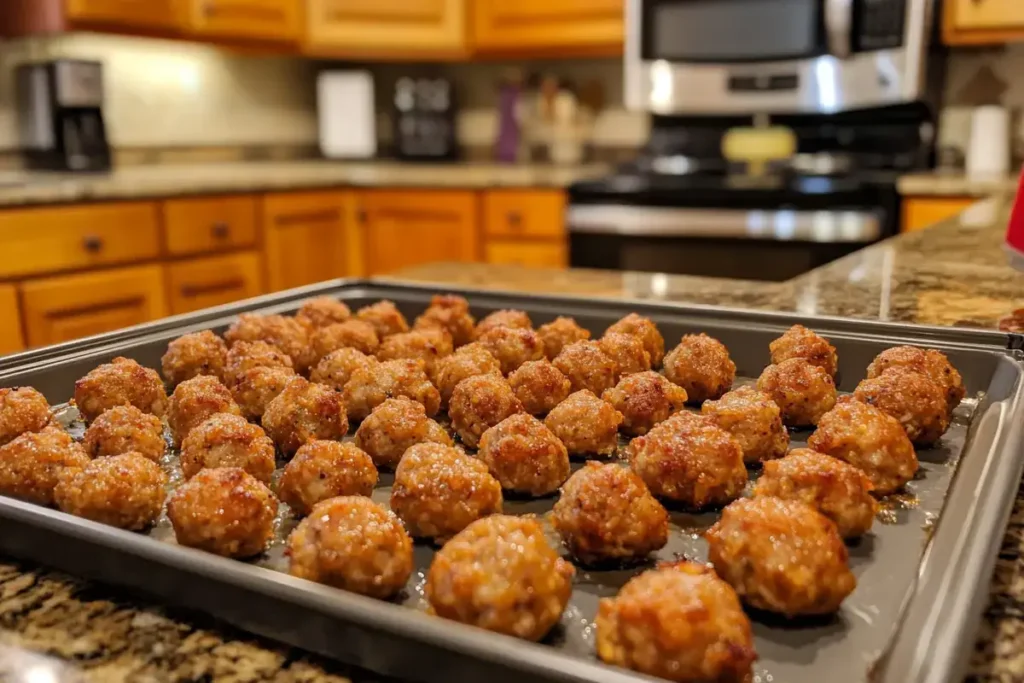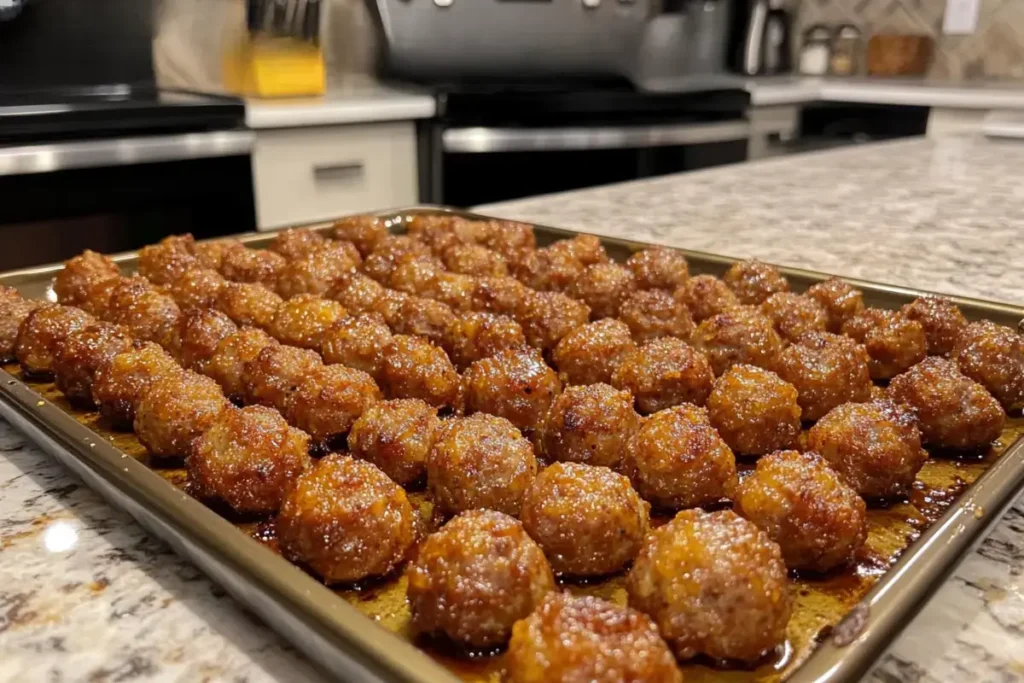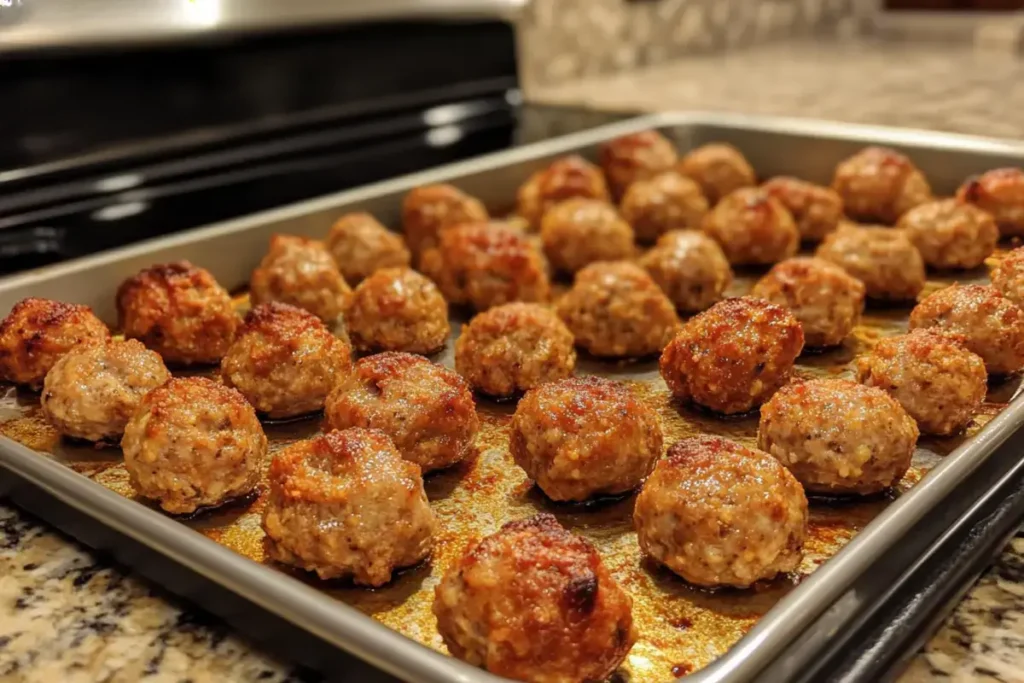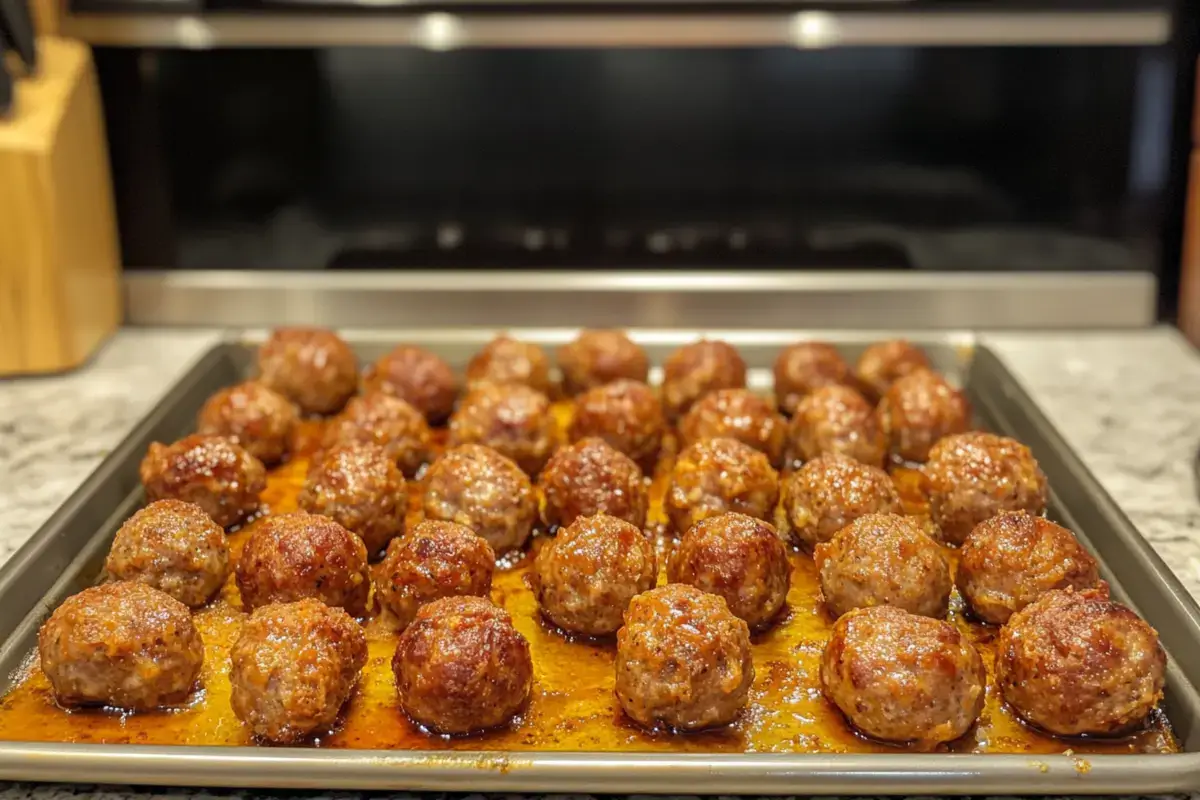Hey friends, Jessika here from Boldy Recipes! If you’ve ever made sausage balls only to have them come out dry and crumbly instead of moist and tender, you’re not alone. This is hands-down the most common sausage ball problem I hear about from readers. After making these countless times and troubleshooting with home cooks across the country, I’ve identified the exact reasons this happens , and more importantly, how to fix it. Let’s solve this together!
The Main Culprits Behind Dry Sausage Balls
1. Using Lean or Turkey Sausage
The Problem: This is the number one cause of dry sausage balls. Lean sausage, reduced-fat sausage, or turkey sausage simply don’t contain enough fat to keep the balls moist.
Why It Matters: Regular pork sausage contains about 20-30% fat. As it cooks, this fat melts and distributes throughout the baking mix, creating moisture and tender texture. Lean versions lack this crucial fat.
The Solution: Use regular pork breakfast sausage , not “lite,” “lean,” or turkey versions. Jimmy Dean Regular, Bob Evans Original, or similar brands with normal fat content are perfect. Don’t fear the fat , it’s essential for the recipe to work.
If You Must Use Lean Sausage: Add ½ cup sour cream or 4 oz softened cream cheese to compensate for missing moisture and fat.
2. Overbaking
The Problem: Leaving sausage balls in the oven too long dries them out, even if you started with the right ingredients.
Why It Matters: Sausage balls continue cooking slightly after removal from the oven. Overbaking drives out moisture and makes proteins tough.
The Solution: Bake at 375°F for 18-22 minutes only, until just golden brown. Pull them when they’re barely done , internal temperature of 160°F. The bottoms should be golden, but the tops shouldn’t be dark brown. Check a few minutes early rather than late.
Pro Tip: Bake a test ball first. Ovens vary significantly, and once you know your oven’s timing, you’ll nail it every time.
3. Too Much Baking Mix
The Problem: Adding too much Bisquick or baking mix creates a dry, flour-heavy texture.
Why It Matters: The standard ratio is 1 pound sausage to 2 cups baking mix. More than this absorbs too much fat and moisture, creating dry, dense balls.
The Solution: Measure accurately using the spoon-and-level method (spoon baking mix into measuring cup, level off with a knife). Don’t scoop directly from the box , this compacts it and adds extra. The mixture should feel slightly moist and sticky, not dry and crumbly.
Visual Check: Before forming balls, squeeze a bit of mixture in your palm. It should hold together easily without being wet. If it crumbles apart, it’s too dry , add 2-3 tablespoons milk.
4. Not Enough Moisture in the Mix
The Problem: Sometimes the mixture itself is too dry from the start, especially in low-humidity climates or with certain sausage brands.
Why It Matters: The mixture needs enough moisture to bind properly and stay tender during baking.
The Solution: If your mixture seems dry or crumbly when mixing, add liquid gradually , 1 tablespoon at a time of milk, water, or even beer. Start with 2 tablespoons and add more if needed. The mixture should be moist but not wet.
5. Shredded Cheese Issues
The Problem: Using pre-shredded cheese or not enough cheese can contribute to dryness.
Why It Matters: Pre-shredded cheese contains anti-caking agents (cellulose) that prevent proper melting and moisture distribution. Cheese adds fat and moisture too.
The Solution: Shred your own cheese from a block. Use the full 2 cups called for in recipes (or even 2½ cups for extra moisture). Sharp cheddar is standard, but adding cream cheese (4 oz) creates incredibly moist sausage balls.

My Expert Prevention Tips
Room Temperature Sausage: Let it sit out 20-30 minutes before mixing. It incorporates better and you’ll mix less, preventing overdevelopment.
Don’t Overmix: Mix just until combined. Overworking develops gluten in the baking mix, creating tough, dry texture.
Uniform Sizing: Use a small cookie scoop to make evenly-sized balls. This ensures consistent cooking , no burnt outsides with raw centers or overdone dry balls.
Add Moisture Boosters: I often add 3-4 tablespoons of milk to my standard recipe for insurance. Other moisture-boosting additions: sour cream, cream cheese, or even a beaten egg.
Store Properly: If reheating leftovers, add a pat of butter to your reheating dish and cover with foil to trap moisture. Dry storage or reheating in the microwave makes them drier.
The Bottom Line
Dry sausage balls almost always come down to using lean sausage, overbaking, or too much baking mix. Fix these three issues and you’ll have moist, tender sausage balls every time.
Remember: use regular pork sausage (20%+ fat), measure baking mix accurately (don’t pack it), and pull them from the oven when just golden at 160°F internal temperature. When in doubt, add a splash of milk to your mixture and err on the side of slightly underbaking rather than overbaking.
Follow these guidelines and your sausage ball dry-spell is over!

Frequently Asked Questions
Can I fix dry sausage balls after they’re baked?
Partially. Brush hot sausage balls with melted butter or garlic butter immediately after baking to add surface moisture. For reheating leftovers, place in a covered dish with a tablespoon of butter or broth and warm at 325°F for 10 minutes. This won’t fix severely dry balls but helps somewhat.
How do I know if my sausage mixture is too dry before baking?
Squeeze a small amount in your palm , it should hold together without crumbling. If it falls apart, add milk 1 tablespoon at a time until it binds. The mixture should feel slightly sticky and moist, not dry or powdery.
Is it better to underbake or overbake sausage balls?
Underbake slightly. Sausage balls need to reach 160°F internal temperature for safety, but pulling them right at that temperature (not beyond) prevents drying. They continue cooking briefly after removal. Overbaking is irreversible and always results in dry texture.
Can I add extra cheese to make them moister?
Yes! Increasing cheese to 2½-3 cups adds moisture and fat. You can also add 4-8 oz cream cheese to the mixture for ultra-moist sausage balls. The texture will be slightly different but much more moist and rich.

Nail your next batch of sausage balls with my foolproof recipe on Boldy Recipes , guaranteed moist and delicious!
Happy cooking!
Jessika, Boldy Recipes

